Despite the refreshing openness of last week’s judicial seminar on the Supreme Court, some of the most difficult questions remain unanswered.
We learned, for example, that more than 30 applications have been received for the three judicial posts that will have become vacant by next October when the new court takes over from the Law Lords – Lord Hoffmann, Lord Carswell and Lord Scott are all approaching their mandatory retirement age of 75.
On the appointments panel will be Lord Phillips, the senior Law Lord, his number two Lord Hoffmann, Lady Prashar from the Judicial Appointments Commission, Elspeth MacArthur from the Scottish appointments board and Mr Justice Weatherup from the Northern Ireland appointments commission.
Sir Brian Kerr, Lord Chief Justice of Northern Ireland, is bound to succeed Lord Carswell. Although it is theoretically possible, I don’t think anyone will be appointed direct from the bar – Jonathan Sumption QC and Lord Pannick QC have made it pretty clear that they are not interested, at least for the time being. So that leaves two judges to be promoted from the Court of Appeal.
Lord Justice Lloyd is regarded as the hot tip. Sir Timothy Lloyd, 61, was a Chancery judge before joining the Court of Appeal in 2005. Strong contenders for the remaining vacancy must be Sir Anthony Clarke, 65, and Lord Justice Carnwath, 63 – though I would expect to see Sir Anthony remaining Master of the Rolls for a little while longer.
They will not become peers on appointment, unlike the Law Lords they are joining. There seems support for the suggestion – which I discussed in this column in February – that the new justices should be given the honorary title of ‘Lord’ or ‘Lady’, like the Scottish equivalent of High Court judges. But nothing has yet been announced.
Still, the new emblem has been approved – although the hand-painted version released to the media was not the simplified design, with the bold omega, that will be used on documents.
And the court has committed itself to outreach, with a full-time education officer targeting A-level and university students. Summaries of each judgment will be produced and there will be a pilot project to find out whether it is possible to summarise a judgment in a way that is both accessible to the press and acceptable to the judges.
It was perhaps too much to hope that last week’s seminar would resolve some of the bigger questions – such as which cases the Supreme Court should hear. Sir Anthony Clarke thought the Court of Appeal had been quite good at deciding when to grant leave to appeal. Lady Hale agreed, adding that ‘if we are to be the UK Supreme Court, UK issues ought to be high on our agenda’. By that, she meant the court should hear cases involving Britain’s international obligations as well as those affecting the entire UK.
That prompted Sir Alan Beith, MP for Berwick-upon-Tweed, to ask whether there should be greater convergence between Scots law and the law of England and Wales. Though the Scots were well represented at the seminar they all sat firmly on their hands, unwilling to pick up such a hot potato. They were not even prepared to discuss the anomalous position of Scottish civil appeals – which will go to the Supreme Court without the need for permission – and Scottish criminal appeals, which cannot be heard at all unless dressed up as ‘devolution issues’.
And nobody mentioned by far the most controversial proposal currently under discussion – that the Scottish Parliament might make a unilateral declaration of independence for its legal system and ban all civil appeals to the Supreme Court.
Nor did any judges want to comment on the suggestion, attributed to Lord Judge, that the Supreme Court should hear only ‘rare or occasional’ criminal appeals from England and Wales. Under the Lord Chief Justice’s proposed ‘radical rethink’, the Court of Appeal would have the last word, perhaps sitting as a five-judge court when appropriate.
The most interesting question to emerge from the private meetings that preceded last week’s seminar was whether the nature of the court will change once the Law Lords have crossed Parliament Square. Most of the Supreme Court justices think their court will not assume the power to strike down primary legislation, as their counterparts in the US and Israel have done at different times in their history.
To some extent, the level of activism we can expect from the Supreme Court will depend on the approach taken by MPs and peers to specific issues. If Parliament is supine, the judges may step in. But the Supreme Court may also feel the need to intervene if Parliament takes too aggressive a stance on issues such as human rights.
There are even those who believe that once the Law Lords leave Parliament they will come under pressure from lobbyists and government ministers, undermining rather than enhancing judicial independence.
This seems paradoxical, given that the whole idea of removing the Law Lords from the legislature was to separate them from the political process. But it is little more than seven years since the Law Lords were last joined in their deliberations by a senior member of the cabinet. The judicial responsibilities previously held by the Lord Chancellor and the Law Lords’ privileges as members of Parliament could be seen as having protected our most senior judges rather than inhibited them.
The only law on which we can rely with confidence is the law of unintended consequences. And that is what makes the Supreme Court so interesting.

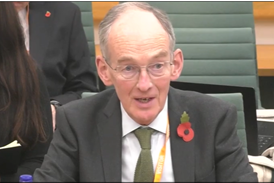










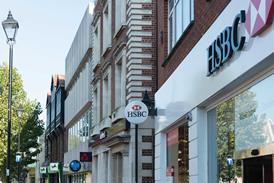




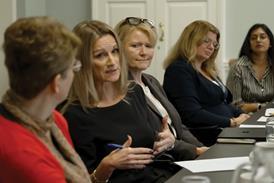
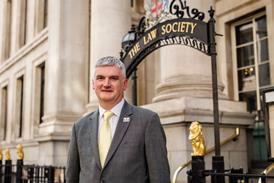
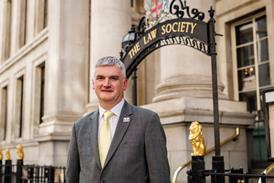







No comments yet